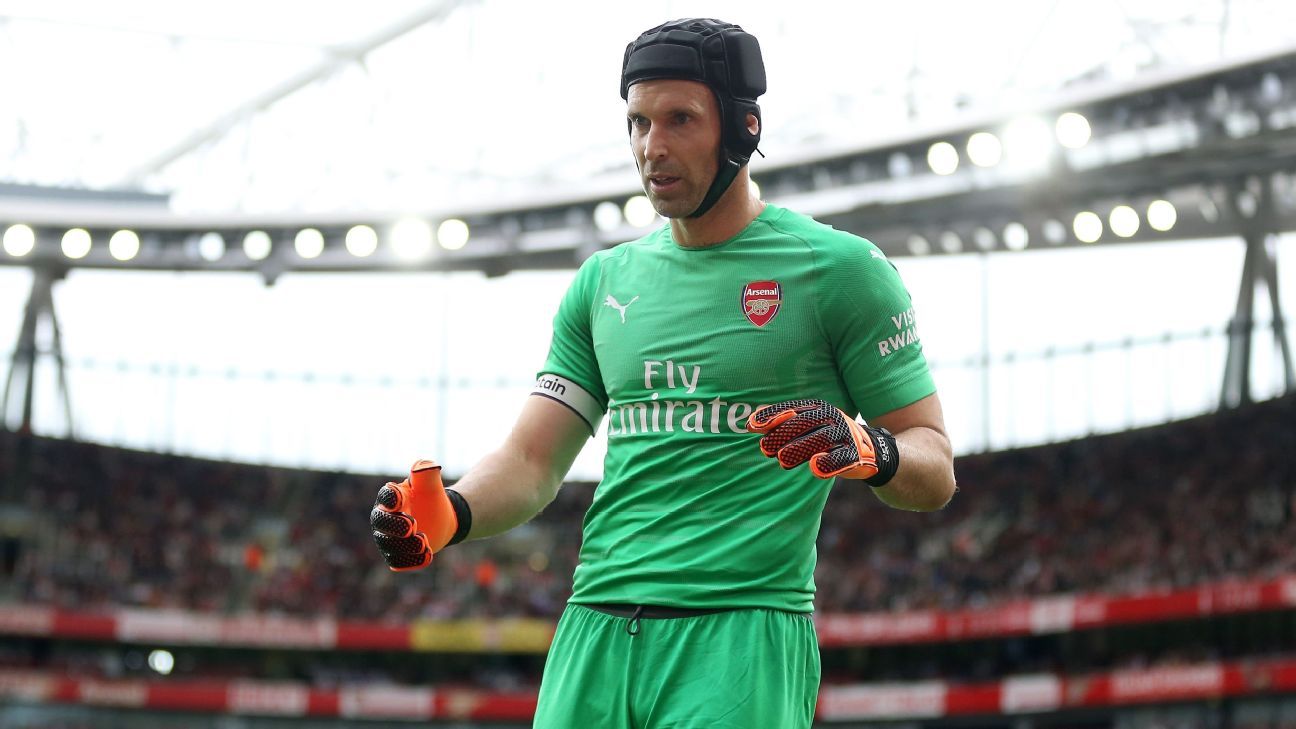
Petr Čech
Date of birth: 20 May 1982
Place of birth: Plzeň, Czechoslovakia
Nationality: Czech 🇨🇿
Height: 1.96 m (6 ft 5 in)
Position(s): Goalkeeper
Arsenal Senior Career: 2015-2019
Senior Apps/Goals: XXX
General Information
Petr Čech (born 20 May 1982 in Plzeň, Czechoslovakia) is a retired Czech goalkeeper who finished his playing career at Arsenal after a hugely successful spell at Chelsea. Calm, commanding and tactically astute, Čech brought experience, leadership and top-level winning habits to the Emirates. He helped steady a defence, kept vital clean sheets, and left a clear mark on the club during a period of rebuilding.
Early Life and Youth Development
Čech grew up in Plzeň and started out playing locally before joining the Sparta Prague youth system. He moved into senior football with Chmel Blšany and then stepped up to Sparta Prague’s senior side, where he gained valuable first-team experience as a teenager. His performances for the Czech youth teams and then the national senior side soon attracted attention abroad. Consequently, he moved to Rennes in France, where a string of assured displays convinced bigger clubs to take note. Those early years shaped Čech’s technique, decision-making and calmness under pressure.
Breakthrough at Rennes and Move to Chelsea
After adapting quickly at Rennes, Čech earned a Premier League transfer in 2004 when Chelsea signed him. He arrived as a promising young keeper, but he soon became a defining figure for the club. Under José Mourinho and subsequent managers, Čech developed into one of Europe’s best goalkeepers. He combined sharp reflexes with sound positional sense and a superb ability to read danger. Moreover, his shot-stopping in one-on-ones and his command of the penalty area raised Chelsea’s defensive floor.
Chelsea Glory and Resilience
At Chelsea, Čech won multiple league titles, FA Cups, the Champions League and other major honours. He set records for clean sheets and became synonymous with consistency. However, his career also featured one of the most dramatic moments in modern football. In 2006, he suffered a serious head injury during a match. Rather than end his career, the setback changed it: Čech returned wearing protective headgear and continued to perform at the highest level for many years. That comeback underlined his resilience and professionalism.
Arrival at Arsenal and Immediate Impact
In 2015, Arsenal signed Čech to bring top-class experience between the posts. The move surprised some observers, yet it made sense for a club seeking greater defensive security. Čech adjusted quickly to life at the Emirates. He organised the defence, communicated clearly from the back, and helped younger defenders understand tactical details. In his first full season, he won the Premier League Golden Glove, keeping an impressive number of clean sheets. Consequently, his early Arsenal years felt like a statement: the club had a reliable presence in goal once more.
Key Matches and Moments for Arsenal
Throughout his Arsenal stint, Čech produced several match-winning displays. He was at his best in high-pressure games, pulling off crucial saves that preserved points and momentum. One standout came in league fixtures where his positioning and reflexes rescued the team from tight situations. He also played a central role in Arsenal’s 2016–17 FA Cup campaign, helping the club lift silverware and reinforcing his value as a leader in big matches. Even when the results did not always go Arsenal’s way, Čech’s performances rarely dipped; he offered stability every time he wore the shirt.
Playing Style and Strengths
Čech combined classical goalkeeping traits with excellent game intelligence. Firstly, his shot-stopping remained elite; he reacted quickly and used strong technique to parry or catch dangerous attempts. Secondly, he read the game well—anticipation often put him in the right place before problems escalated. Thirdly, his aerial command reduced opposition set-piece threats. Beyond pure saves, Čech contributed with calm distribution, measured throws and accurate long kicks that aided quick transitions. Importantly, he communicated constantly, organising the defensive line and reducing uncertainty for his teammates.
Challenges and Growth Areas
Age and the physical toll of top-flight football eventually affected Čech’s agility. Over time, reaction speed and recovery from diving saves slowed slightly. Nevertheless, he adapted by relying more on positioning and reading of the game. Another challenge came from competition for the starting spot as Arsenal looked to the future; balancing mentorship with performance was a new managerial and personal task. Čech handled this professionally, sharing experience with the next generation while maintaining high training standards.
Leadership and Influence
Beyond numbers, Čech’s greatest contribution to Arsenal was arguably his leadership. He set professional standards in training and preparation. Younger players benefited from his routines, his video work, and his calm manner under pressure. Moreover, he acted as a buffer between the back line and the rest of the squad, enabling defenders to play with confidence. His presence raised expectations inside the dressing room and helped establish a culture of defensive responsibility.
Legacy
Petr Čech retired having left a clear legacy in English football and at Arsenal. While the peak of his trophy haul came at Chelsea, his years at the Emirates added a chapter defined by leadership, consistency and a return to defensive assurance. Arsenal supporters remember him for big saves, calm authority, and the way he helped younger players grow. More broadly, Čech’s career stands as an example of resilience—returning from a career-threatening injury to reach and sustain excellence. He remains one of the defining goalkeepers of his generation and a respected figure in Arsenal’s recent history.
| Season | Appearances | Goals |
| 2015/16 | 42 | 0 |
| 2016/17 | 37 | 0 |
| 2017/18 | 38 | 0 |
| 2018/19 | 22 | 0 |

